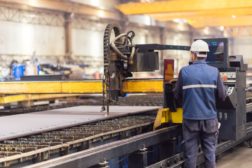Home » Keywords: » Internet of Things
Items Tagged with 'Internet of Things'
ARTICLES
Identifying convergence fields and technologies for industrial safety
Key findings of a recent study on LDA-based network analysis
July 2, 2020
Become a Leader in Safety Culture
Build your knowledge with ISHN, covering key safety, health and industrial hygiene news, products, and trends.
JOIN TODAYCopyright ©2025. All Rights Reserved BNP Media.
Design, CMS, Hosting & Web Development :: ePublishing





